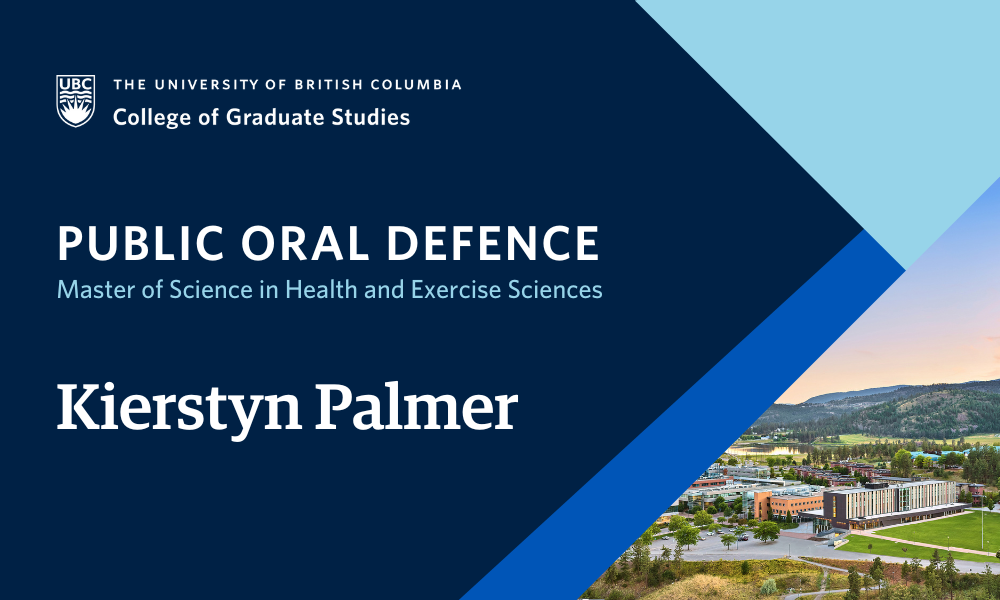
Thesis Defence: Pain, Well-Being, and Physical Activity in Adults with Chronic Pain and Spinal Cord Injury
October 10 at 9:00 am - 1:00 pm

Kierstyn Palmer, supervised by Dr. Kathleen Martin Ginis, will defend their thesis titled “Pain, Well-Being, and Physical Activity in Adults with Chronic Pain and Spinal Cord Injury” in partial fulfillment of the requirements for the degree of Master of Science in Health and Exercise Sciences.
An abstract for Kierstyn Palmer’s thesis is included below.
Defences are open to all members of the campus community as well as the general public. Registration is not required for in person defences.
ABSTRACT
Purpose: People with spinal cord injuries (SCI) represent a population with high prevalence of chronic pain. Neuropathic pain and musculoskeletal pain are two types of pain that affect this population and have varying symptomology. Despite high prevalence of pain and the need for safe, specific, and effective treatment options, research on biopsychosocial differences between chronic pain types in SCI is limited. The purpose of this study was to compare pain intensity and interference, subjective well-being, and physical activity between those with SCI and chronic neuropathic pain versus those with SCI and chronic musculoskeletal pain. Understanding differences between pain types will provide valuable insight for future research and treatment of SCI chronic pain.
Methods: This study was a cross-sectional study assessing pain severity, pain interference, positive affect, negative affect (i.e., stress), life satisfaction, and leisure time physical activity in 46 individuals with chronic pain and SCI. This study used natural groups, where individuals were categorized as “NP group” or “MSK group” based on their primary (worst) pain problem reported on pain questionnaires. Means for each group were compared using analysis of variance (ANOVA), analysis of covariance (ANCOVA) tests, and effect size calculations.
Results: Those in the NP group had significantly greater pain severity than those in the MSK group (p=0.026). There were no other significant differences found between groups. However, effect size calculations indicated meaningful differences between groups, including greater pain interference (small to medium effect), more stress (medium effect), and lower satisfaction with life (small to medium effect), in those with NP than those with MSK. And yet, participants with NP also had greater positive affect (small effect) and more minutes of physical activity per week (small to medium effect) than those with MSK.
Conclusion: The results suggest significant differences in pain, as well as meaningful differences in well-being and leisure time physical activity between those with SCI and chronic NP versus chronic MSK. Further research is needed to look into mechanisms that might account for these differences. Clinical interventions should focus on multiple components of the biopsychosocial model to improve the lives of people with SCI and chronic pain. Lastly, emphasis should be made on providing support to those with chronic NP as they appear to experience worse outcomes of pain, stress, and life satisfaction.